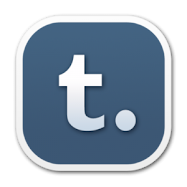Wood screws are known by length, type of head, gauge, and metal of which they are made.
SIZES. Fig. 1 shows where the length is taken from, and gives the three different kinds of heads. The gauge is the diameter of the shank, and is known by numbers. The gauge number applies regardless of the screw length. Thus a 1 in. No. 8 screw is of the same diameter and has the same size head as a 3 in. No. 8 screw. Metals are chiefly iron, brass, and blacked (iron). Order screws in this way: "three dozen 1.5 in. nines, countersunk, iron." The illustrations show the screws in full size enabling the gauge to be seen.
The following are generally useful sizes, but can be varied to suit the job: 0.5 in. 4s; 0.75 in. 8s; 1.5 in. 9s; 2 in. 9s; 3 in. 12s. Countersunk screws are used when the head has to be recessed flush into the wood. Round heads are chiefly for fixing metal fittings. Raised heads are a neater variety of countersunk screws and are mostly used with screw cups.
Two sizes of holes are needed for screws: the thread hole into which the screw bites, which should be of about the same size as the centre rod portion around which the thread winds; and the clearance hole in the wood immediately under the screw head. This should be slightly larger than the shank of the screw. When driving brass screws into hardwood it is advisable to put in iron ones first. They are then withdrawn and replaced by brass. Otherwise the screw may break off.
When screws are required for fixing a metal fitting it is advisable to take the latter to the shop so that the screws can be actually tried in the holes. Iron screws are used for most work as they are the strongest. Brass are useful for brass cabinet fittings, and for use in outdoor oak. Iron used in the latter causes discolouration in the wood, and corrosion in the metal.
Sunday 28 October 2012
Subscribe to:
Post Comments (Atom)






0 comments:
Post a Comment